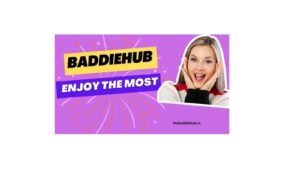Introduction:
In today’s digital world, simply creating content isn’t enough; it must be optimised to rank highly on search engines like Google, Bing, Yahoo, etc. High-ranking content attracts further business, builds credibility, and drives transformations. Whether you are a blogger, marketer, or business proprietor, learning SEO content writing is essential. But what does it take to constantly reach the top of the hunt results? It goes beyond stuffing keywords; it’s about creating precious, applicable, well-structured content that aligns with user intent.
If you are looking for a partner who can provide professional copywriting services, getting one based in Manchester will take your brand to the next level with awesome copywriting services. From web copy to blogs to product descriptions, hiring a copywriter Manchester who knows how to resonate ensures your message hits home, converts, and rises above the noise in a cluttered market.
This article discusses some essential ways to enhance the visibility of your content in search results, which will play a crucial role in your effectiveness in the online world.
Understanding Search Intent
To write content that ranks well on search engines, start by understanding user intent. Ask yourself what the user is looking for when they classify a query. Are they seeking information, looking to make a purchase, or comparing options? Confirm your content to answer that intent directly and easily. For instructional quests, give detailed explanations. For marketable intent, highlight benefits and results.
Aligning your content with user intent helps reduce bounce rates and increases engagement.
Keyword Research
The road to SEO-friendly content begins with effective keyword exploration. Tools such as Google Keyword Planner, Ahrefs, or SEMrush can help you know which applicable keywords have a healthy hunt volume versus competition ratio. Appeal to a wider followership by including both long and short-tail keywords on the page. Use these keywords throughout your content naturally, especially in title, headlines, meta description and the first 100 words. Avoid keyword stuffing, which can hurt rankings. Proper keyword exploration ensures your content appears in front of the right followership at the right time.
Compelling Captions and Meta Descriptions
Your caption is the first print your content. Craft attention-grabbing titles that easily indicate what the anthology will contain. Incorporate your primary keyword beforehand in the title for better SEO impact. Inversely important is the meta description; it’s your chance to convert users to click through to your content. A well-written meta description summarises your content in 150 – 160 characters and includes a call to action or value proposition. While meta descriptions don’t directly impact rankings, advanced click-through rates can laterally ameliorate your search engine performance.
Structuring Your Content
A well-structured composition is easier for both users and search machines to comprehend. Use heads( H1, H2, H3) to organise your content and guide the anthology through your points. Break overlong blocks of the textbook into shorter paragraphs to ameliorate readability. To punctuate important information, include bullet points, numbered lists, and bolded crucial expressions. This makes scanning easier for compendia and helps Google understand the scale and applicability of your content. Structured content also increases the chance of your runner earning featured snippets — special results that appear at the top of Google and greatly increase visibility and business.
Creating High-Quality Content
Google prioritises content that offers value, depth, and delicacy. Focus on creating original, well-researched papers that give comprehensive answers. Avoid duplicating content from other spots. Rather, bring unique perceptivity, up-to-date data, or practical exemplifications to the table. Use authoritative sources and link to believable references when applicable. High-quality content builds trust with your followership and signals moxie to search machines. Adding images, infographics, and videos can also enhance happiness quality by furnishing multiple formats for information consumption. Eventually, the better your content serves users, the more likely it is to rank higher and earn backlinks organically.
Optimising for On-Page SEO
On-page SEO refers to the elements you can control within your website. Start by optimizing your URL—make it short and descriptive and include the main keyword. Use your target keyword in the first paragraph and sprinkle it naturally throughout the content. Add alt textbooks to images with descriptive, keyword-rich captions. Ensure internal linking connects to other applicable runners on your page to boost engagement and SEO. Don’t forget mobile responsiveness and fast loading times, which are ranking factors.
Conclusion
Ranking high on search engines doesn’t happen by chance; it results from thoughtful planning, harmonious optimisation, and delivering genuine value. From understanding user intent and doing proper keyword exploration to optimising on-page rudiments and streamlining old content, every step plays a pivotal part. The digital geography is competitive, but your content can rise above the noise with the right approach. Focus on serving your followership first search machines will follow.
Keep your literacy, refine, and conform to your strategy. When done right, SEO content writing becomes a long-term asset that brings sustained business, builds trust, and supports your brand’s growth online.






